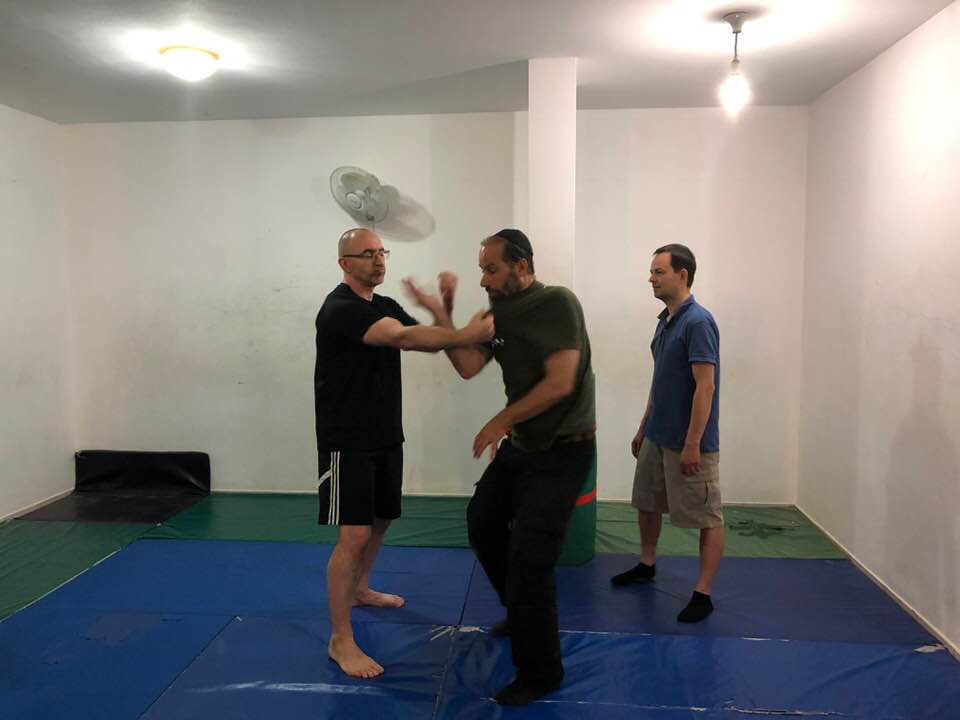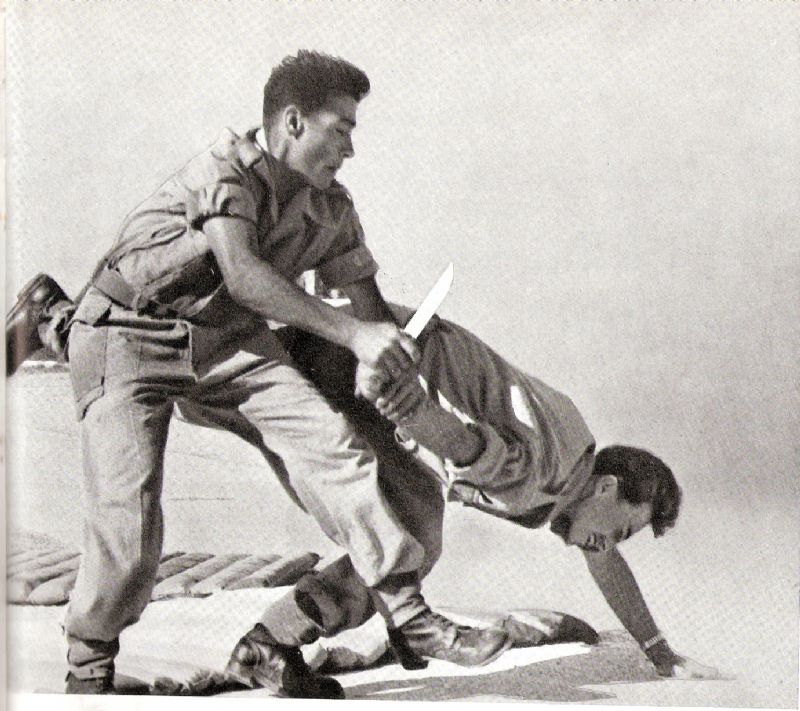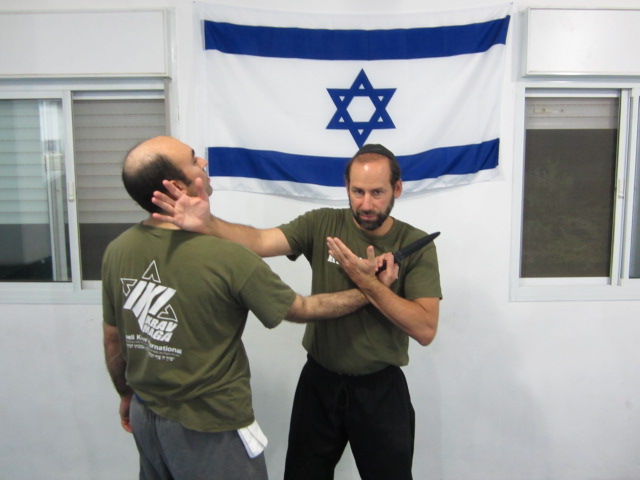- Home
- Krav Maga Blog
- Krav Instructors
- Train in Israel
- Tour Train Israel
- Krav Shop
- DVD
- Kickboxing
- IKI Near Me
- Seminars
- IKI Membership
- On-Line Training
- Krav Maga Training
- Testimonials
- History Krav Maga
- Instructors Page
- Past Blogs
- Spanish
- Italian
- Certification
- Contact
- Holland Seminar
- Vienna Seminar
- Poland Seminar
- Italy Seminar
- Belt Requirements
grabbing too much
by Moshe Katz
CEO
Israeli Krav International
May 27, 2018, Israel

Defense vs. a shirt grab, with instructor Jurgen.
We are born grabbing. We find it adorable when we put out our finger and the baby grabs our finger with his little fist. Soon the baby is grabbing everything and putting it into his mouth. This can be dangerous. Too much grabbing is dangerous. As we get older one of the most difficult things is learning to let go, when the time is right. We hold on to things too long; negative emotions, clutter in our drawers, some things need to be let go off.
The rabbis was us תָּפַסְתָּ מְרֻבֶּה, לֹא תָּפַסְתָּ
This means; One who has grabbed a lot, has not grabbed anything. (Talmud, various places). We like to grab and the rabbis need to warn us, don't try and grab too much. And yet we love to grab.
The same applies quite literally to Krav Maga. With a knife threat or a shirt grab, or other similar threats, most style of Krav Maga want to grab. We see it all the time; the Krav Maga teacher grabs the wrist of the attacker and then does some clever disarm. This is actually just an imitation of traditional Japanese jujitsu. In the 1950's when Krav Maga was still called Kapap by many, new immigrants to Israel with training in Jujitsu played a significant role in introducing elements of Jujitsu into the developing Krav Maga/Kapap.
With many styles of Japanese and Korean martial arts the grabbing is a key element but with IKI Krav Maga it is not. We shall explain.
Humans and primates like to grab. There is something in our nature that loves to grab. When I was living in America there was a TV commercial, Don't grab the Charmin. It was to advertise the softness of a bath tissue, so soft that people could not resist grabbing it. Humans like to grab, just as our primates like to grab. And this is a difficult habit to break even when grabbing is counter-productive, as it is with self-defense.
Let me repeat, people cannot resist grabbing.
Let us take a self-defense scenario; someone grabs your shirt and puts a knife to your throat and shoves you against the wall. Not pleasant at all. Your normal abilities diminish. Your fine motor skills diminish or disappear. The problem is that in the training session you still retain those abilities and you imagine that in a real situation you will Also posses those abilities. In fact when the stress kicks in, our precision abilities go out. They are gone. We can't do the things we trained for. Our training was incorrect. It was technical but not realistic.
Now what do most Krav Maga practitioners love to do with this knife threat?
You guess it GRAB. They love to grab. But I say this is a mistake.
Why?
Let's think logically. The knife is already touching your throat, that means the knife is, so to speak, at the finish line. It is not inches away, but already touching your delicate skin. Your defense, your hands, is not there, it is a certain distance away. Thus we have a race where one participant is at the finish line while the other participants is still at the starting position. The referee shouts START! Who will win the race?
Of course the man who is already at the finish line will win, he is already there! It is the same with the knife threat. The knife is already there, your hands are not there yet. You have almost no chance.
So how are we different? We are different in that we do not build techniques that rely upon strength, speed, precision, fine motor sills, or accuracy.
In the situation we described with the knife threat, we do not try and grab the hand. This is a key point. We do not grab. We do not depend upon grabbing. We do not believe in slight of hand techniques. We are not magicians, but only ordinary human beings. Grabbing involves all the elements we try to avoid: Precision - you must grab the wrist in an exact way, I know this well, I have an advanced rank in jujitsu. You must be very fast because his wrist will be moving. You must be strong because as soon as you try to grab him he will naturally resists. What we do is begin with Body Shifting, Body Movement, rather than Rapid Hand Movement. A slight shift of the body changes everything, simultaneously we use our wrist to trap and pin his arm. We do not attempt to grab his wrist, certainly not the bladed weapon. We do not attempt to be faster then him, we do not attempt to win a race that is already over. Grabbing is probably the most difficult techniques to learn and do correctly under duress. I know. I have trained in that style for years.
Another element to consider is that whatever I can do, he can do. We teach many wrist releases, i.e. how to get out of the wrist grab. Just as we can get out of the wrist grab easily, so can he.
Of course to actually learn our technique you must come to class, or purchase a DVD. Here I only attempt to explain the concept. If you try to grab, you will not succeed. As the rabbis warned us two thousand years ago, grabbing is dangerous.

Old Kapap technique involving trying to control a man by grabbing, while it can be effective once the wrist is firmly grabbed this is nearly impossible to execute under situations of extreme violence and movement. We reject this style of techniques.
Krav Maga DVDs and Direct downloads
Direct from Israel. Step by step, easy to follow.
For beginners or advanced practitioners. Detailed explanations, easy to follow.
